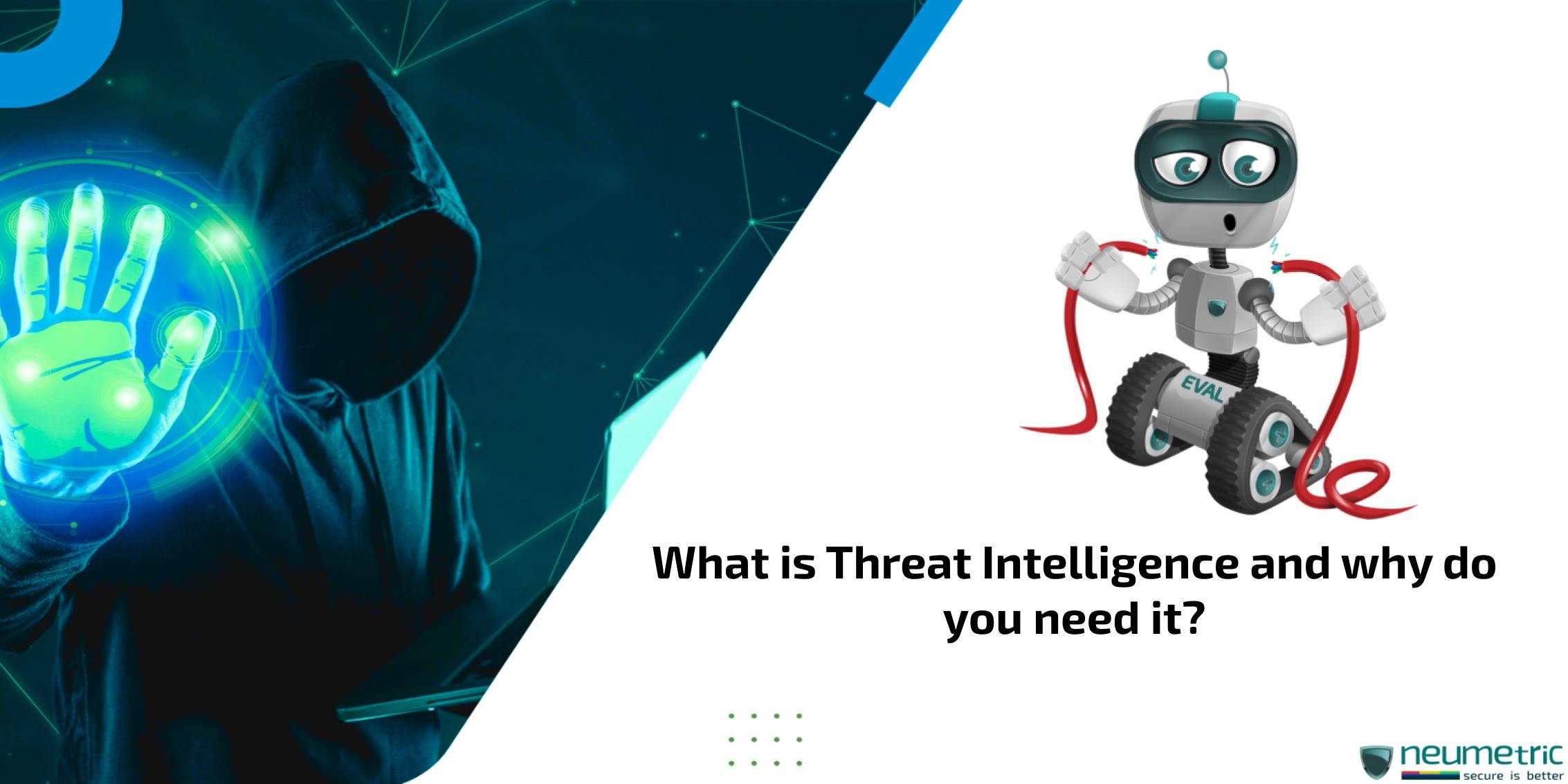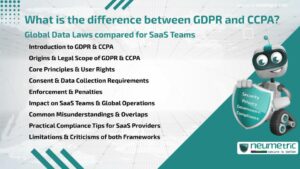Table of Contents
ToggleIntroduction
In the intricate tapestry of our digitized existence, the prevalence of cyber threats has become an undeniable reality. As we immerse ourselves deeper into the realms of technology, the need for a proactive defense against potential risks has never been more critical. Threat intelligence is a strategic cornerstone in the ever-evolving landscape of cybersecurity. It goes beyond mere data accumulation, encapsulating the profound ability to decipher, anticipate & counteract cyber threats with a level of agility that traditional security measures often lack.
At its essence, threat intelligence is the art of transforming raw information into actionable insights. It involves a meticulous analysis of the expansive digital landscape, unraveling the intricacies of potential threats such as malware, phishing attacks & sophisticated cyber campaigns. This proactive approach not only empowers individuals & organizations to stay ahead of cyber adversaries but also instills a culture of security awareness that permeates throughout an entire organizational framework.
In an era where the digital frontier is fraught with dynamic & sophisticated cyber challenges, threat intelligence emerges as the guiding light for those navigating this complex terrain. It serves as a catalyst for a paradigm shift from reactive cybersecurity measures to a proactive defense strategy, equipping entities with the knowledge & foresight needed to safeguard against emerging threats. As we embark on this journey into the realm of threat intelligence, we unveil not just a defense mechanism but a strategic imperative for resilience in the face of an ever-shifting digital landscape.
Gathering Raw Data
- Monitoring Hacker Forums: In the dynamic landscape of cybersecurity, monitoring hacker forums stands as a frontline strategy in gathering raw data for effective threat intelligence. These online hubs serve as virtual watering holes for cybercriminals, where they share tactics, tools & collaborate on malicious activities. By immersing themselves into these digital underworlds, cybersecurity experts gain crucial insights into emerging threats, evolving techniques & the pulse of the cybercrime ecosystem. It’s a proactive stance that enables organizations to understand the language of potential adversaries, anticipating their moves before they materialize into actual threats.
- Analyzing Malware: The analysis of malware is a meticulous process akin to digital forensics, where cybersecurity professionals dissect malicious code to unravel its intricacies. This facet of gathering raw data involves understanding the functionalities of malware & its potential impact on systems. By playing the role of digital detectives, experts can identify the fingerprints left by cybercriminals, contributing not only to the identification of existing threats but also informing the creation of robust defenses against future variations. It’s a proactive & preventive measure that transforms raw data into actionable intelligence, ensuring organizations are fortified against the ever-evolving landscape of digital threats.
- Reviewing Attack Patterns: The retrospective analysis of attack patterns is a strategic component in gathering raw data for effective threat intelligence. By studying the historical footprints of cyber attacks, security experts can discern patterns, tactics & trends employed by malicious actors. This insightful examination provides a roadmap for anticipating future threats, allowing organizations to fortify their defenses against specific attack vectors. It’s a forward-thinking approach that leverages past incidents to predict & prepare for potential future cyber threats, ensuring a proactive stance in the constant battle for digital security.
Analyzing & Enriching
Transforming raw data into meaningful insights through the process of analyzing & enriching is the next important phase of threat intelligence. It’s not just about having a pile of information; it’s about connecting the dots, providing context & gaining a profound understanding of potential threats.
- Connecting Dots Between Data: Connecting the dots involves identifying patterns & relationships within the collected data. By understanding how seemingly disparate elements correlate, cybersecurity experts can unveil potential threats that might go unnoticed with a narrow focus. It’s the art of transforming fragmented data into a cohesive narrative that tells the story of looming cyber risks.
- Providing Context: Raw data, much like pieces of a puzzle, gains significance when placed in the right context. Threat intelligence goes beyond just presenting information; it provides the backdrop, the setting & the circumstances surrounding potential threats. This contextualization is essential for organizations to comprehend the relevance & severity of a threat. Knowing the ‘why’ & ‘how’ behind the data equips decision-makers with the insights needed to formulate effective & targeted responses.
- Identifying Vulnerabilities: One of the primary goals of threat intelligence is to act as a digital vulnerability scanner. By analyzing data, cybersecurity experts can pinpoint weaknesses in systems, applications or processes that could be exploited by cyber adversaries. This proactive identification of vulnerabilities allows organizations to fortify their defenses, patching potential entry points before they become avenues for malicious activities.
- Tracking Actor Motivations/Tactics: Understanding the motivations & tactics of cyber actors is at the core of effective threat intelligence. It’s not just about knowing the ‘what’ of a potential threat but delving into the ‘why’ & ‘how’ behind it. By tracking the motivations & tactics of potential adversaries, organizations can anticipate their moves, making it harder for malicious actors to execute successful attacks. This proactive stance transforms threat intelligence from a reactive defense mechanism into a strategic asset in the ongoing battle for digital security.
Creating Actionable Intelligence
When it comes to cybersecurity, threat intelligence isn’t just about amassing data; it’s about transforming that data into actionable intelligence that empowers organizations to stay ahead of the game.
- Prioritizing Relevant Threats: Not all threats are created equal & that’s where the magic of prioritization comes in. Threat intelligence helps sift through the noise, identifying & prioritizing the most relevant & imminent threats. By focusing on what truly matters, organizations can allocate resources effectively, addressing the most pressing issues first & fortifying their defenses where it counts the most.
- Making Tactical Recommendations: It’s not enough to know there’s a threat; you need a game plan. Threat intelligence goes beyond mere identification; it offers tactical recommendations on how to respond. These are not generic solutions but tailored strategies that take into account the specific nature of the threat at hand. It’s like having a cybersecurity advisor in your corner, providing insights on the best course of action to neutralize the threat.
- Enabling Preventative Controls: Prevention is the name of the game in cybersecurity & threat intelligence plays a pivotal role in enabling preventative controls. By understanding the modus operandi of potential adversaries, organizations can proactively set up barriers & roadblocks. It’s about closing the doors before the threat knocks, putting in place the necessary measures to thwart potential attacks before they even begin.
- Informing Security Strategies: Cybersecurity is a chess match & threat intelligence is the strategic playbook. It informs broader security strategies by offering insights into the evolving landscape of cyber threats. This isn’t just about reacting to the current threat but anticipating future moves. It’s a forward-thinking approach that ensures security strategies are not just reactive but adaptive, ready to pivot based on the ever-changing dynamics of the digital battlefield. In essence, creating actionable intelligence is the culmination of turning insights into strategies that not only defend against today’s threats but prepare for tomorrow’s challenges.
Sharing Intelligence
In the world of cybersecurity, sharing is caring, especially when it comes to threat intelligence. It’s not just about having the information; it’s about spreading the knowledge to build a collective defense against digital threats.
- Formatting for Automation: The beauty of threat intelligence lies in its ability to be a team player. Formatting for automation ensures that the valuable insights gleaned are easily digestible by security tools & systems. It’s like speaking the same language across the digital landscape, allowing for seamless integration & quick response. By automating the sharing process, organizations can enhance the speed & efficiency of their threat response mechanisms.
- Integrating Workflows: Threat intelligence shouldn’t be an isolated island; it needs to seamlessly blend into existing workflows. Integration is the key to making threat intelligence actionable. By incorporating threat intelligence into day-to-day operations, from incident response to network monitoring, organizations can create a unified & cohesive defense strategy. It’s about ensuring that threat intelligence isn’t a separate entity but an integral part of the cybersecurity fabric.
- Standardizing Data: To truly harness the power of shared intelligence, standardizing the data is paramount. This ensures that everyone is on the same page, speaking the same data language. Standardization enhances the interoperability of threat intelligence across different platforms & organizations. It’s about creating a common ground where threat information can be easily understood & utilized, fostering a more cohesive & effective defense against a shared digital adversary.
- Promoting Collaboration: Cybersecurity is a team sport & threat intelligence is the playbook. Promoting collaboration involves breaking down silos & encouraging information exchange among different entities, from organizations to government agencies. It’s about creating a network where collective knowledge is the strongest weapon against cyber threats. By fostering a culture of collaboration, the cybersecurity community becomes more resilient, with shared intelligence serving as a force multiplier in the ongoing battle for digital security. In essence, sharing intelligence isn’t just about spreading information; it’s about creating a united front against the ever-evolving landscape of cyber threats.
Measuring Effectiveness
In the world of cybersecurity, knowing if your efforts are hitting the mark is as crucial as having robust defense mechanisms. Measuring the effectiveness of threat intelligence isn’t just about data; it’s about understanding how well your defenses are holding up against the ever-shifting sands of digital threats.
- Tracking Usage: It’s not enough to have a toolbox; you need to know which tools are doing the heavy lifting. Tracking usage of threat intelligence measures the practical impact of the insights gathered. It’s about understanding which pieces of information are actively contributing to your defense strategy. This helps fine-tune the approach, ensuring that the intelligence gathered is not just static data but actively shaping your cybersecurity posture.
- Correlating Avoided Incidents: The best threat is the one you never face. Correlating avoided incidents is a tangible way of measuring the effectiveness of threat intelligence. By connecting the dots between the insights gained & the incidents that were circumvented, organizations can see the direct impact of their proactive approach. It’s the digital equivalent of counting the bullets dodged, providing a real-world measure of how well your defenses are working.
- Calculating ROI: In the world of cybersecurity, return on investment isn’t just a financial metric; it’s about gauging the value of your defense strategies. Calculating the ROI of threat intelligence involves assessing the cost of implementation against the tangible benefits gained. It’s about understanding how much you’re getting back in terms of avoided incidents, reduced response times & overall improved security posture. This not only justifies the investment but guides future decisions on where to allocate resources for maximum impact.
- Identifying Gaps: The effectiveness of threat intelligence is also gauged by identifying gaps in your defense mechanisms. It’s a continuous improvement process that involves understanding where the intelligence fell short or where vulnerabilities persisted. Identifying these gaps provides valuable insights for refining & strengthening your threat intelligence strategy. It’s not about pointing fingers but about learning from incidents & ensuring that each one becomes a stepping stone toward a more resilient cybersecurity posture.
Conclusion
In the fast-paced world of cybersecurity, threat intelligence stands as a linchpin, a critical capability essential for modern security practices. It goes beyond being a mere tool, serving as a strategic guide that equips organizations with the foresight to navigate the complexities of the digital landscape. Threat intelligence is the proactive armor, providing defenders with the knowledge needed to anticipate, respond & safeguard against an array of evolving cyber threats.
As the digital threat landscape continues to morph, the necessity for continuous improvement in threat intelligence becomes evident. It’s not a static solution but an ongoing process of refinement & adaptation. Embracing the ethos of perpetual enhancement ensures that our defense strategies remain agile, resilient & adept at countering the dynamic challenges that characterize the contemporary cybersecurity arena. In this ever-changing digital battleground, the evolution of threat intelligence is not just a strategy; it’s a commitment to staying ahead in the relentless pursuit of digital security.
FAQ
Why is threat intelligence crucial for cybersecurity in today’s digital landscape?
In a nutshell, threat intelligence is like having a crystal ball for cyber threats. It’s not just about spotting dangers but understanding them – where they come from, how they operate & what they might do next. In our interconnected world, it’s a proactive approach to digital defense, helping organizations stay a step ahead of the bad actors lurking in the virtual shadows.
How does threat intelligence differ from traditional cybersecurity measures?
Think of it as upgrading from a basic lock & key to a state-of-the-art security system. Traditional cybersecurity is reactive – it responds when a threat is already knocking. Threat intelligence, on the other hand, is proactive. It’s about predicting potential threats, understanding their nuances & fortifying defenses before an attack even happens. It’s the next level of digital security that transforms information into strategic insights.
Can threat intelligence really make a measurable impact on cybersecurity efforts?
Absolutely. It’s not just about collecting data for the sake of it; it’s about turning that data into actionable intelligence. By connecting the dots, understanding the context & identifying vulnerabilities, threat intelligence becomes a powerful tool in avoiding incidents, saving resources & fortifying against evolving threats. It’s the difference between merely having information & using that information strategically to create a robust defense against the ever-shifting landscape of cyber risks.





